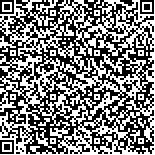下载中心
优秀审稿专家
优秀论文
相关链接
摘要

大气偏振效应不仅可应用于高分辨率定量遥感,其偏振场模式图还可作为偏振导航的信息源。大气偏振场模式图在不同时空与天气条件下对偏振传感器的导航精度有重要影响,天空偏振场图的精确获取与建模、测量精度与误差分析是研究的重要内容。本文从大气偏振模式图的分布和偏振导航传感器两方面介绍仿生偏振导航技术的研究进展。首先介绍瑞利散射理论、米氏散射理论和基于矢量传输方程的偏振模式图光场分布理论,总结了不同方法的适用范围;其次分别介绍日光和月光、陆地和海洋等不同时间、空间环境以及不同天气条件下的偏振模式图分布测试结果,并对比分析了理论仿真与测试结果的异同,同时又介绍了基于云解算的偏振模式图精度测试误差分析;最后通过介绍偏振导航传感器装置的发展历史和研究成果,指出偏振导航应用于组合导航中的广阔前景。目前,本课题组已研制的偏振光导航传感器室内精度可达0.1°,验证了天空偏振光场模式图的客观有效性,为高分辨率偏振遥感技术提供了技术证明。
Skylight polarization field patterns are not only used in high-resolution quantitative remote sensing but are also known as the source of polarization navigation information. Polarization navigation technology for biomimetic insects is a hotspot in navigation and bionic fields. Scientists have found a stable polarization distribution in the sky with the height of the sun. In addition, biologists have found that various insects can use their compound eyes to detect polarization information and achieve navigation and positioning function. Hence, domestic and foreign scholars have conducted extensive research on the mechanism of polarized light navigation sensor of bionic insect compound eyes. Further research into the precision mapping rules between polarization field patterns and polarization sensors under different space-time conditions, the accurate acquisition and modeling of skylight polarization field patterns, and the measurement accuracy and error analysis for information integration of skylight polarization field patterns under multi-space-time conditions is important.
In this study, the research progress of polarized navigation is introduced from the aspects of atmospheric polarization field distribution and polarization navigation technique. The theoretical basis for describing the polarization distribution is introduced. Rayleigh scattering theory is similar to the clear cloudless atmospheric polarization model. Mie scattering theory and the vector radiative transfer equation consider the effects of cloud scattering, and they are closer to the true atmospheric polarization.
The effect of polarization distribution test under different weather conditions is then described in the background of land, ocean, and sunlight and moonlight to compare the differences from neutral points under different conditions. The variation law and physical characteristics of the polarization vector field are summarized. The polarization distribution pattern of the whole weather is proved, which shows that the whole weather has the same variation law but is different in the polarization index. At the same time, the detectable and information utilization of the atmospheric polarized vector field during the day is higher than that at night. Meanwhile, the measurement error analysis based on cloud computing is presented.
Finally, the development history and research results about accuracy assessment of polarized navigation devices at home and abroad are introduced. The broad application of polarization navigation in integrated navigation is pointed out. At present, polarized light navigation sensors can be divided into two types, namely, point-source and imaging types. The point-source type has good real-time performance and imaging robustness. However, its anti-interference ability is poor, making it difficult to achieve real-time measurement. In precision measurement, the point-source type is higher than the imaging type, and the highest accuracy it can reach is 0.1 degrees of navigation accuracy without drift error. A polarized light navigation system is characterized by autonomy with non-accumulative errors. In this study, the combined applications of polarized light navigation sensors and GPS, gyroscopes, and other navigation devices are introduced, and the research direction of polarized light navigation sensors is pointed out. Polarized light navigation is one of the practical applications of atmospheric polarization vector fields. The objective validity of skylight polarization field patterns is verified, and a practical guidance for high-resolution quantitative remote sensing technology is provided.

